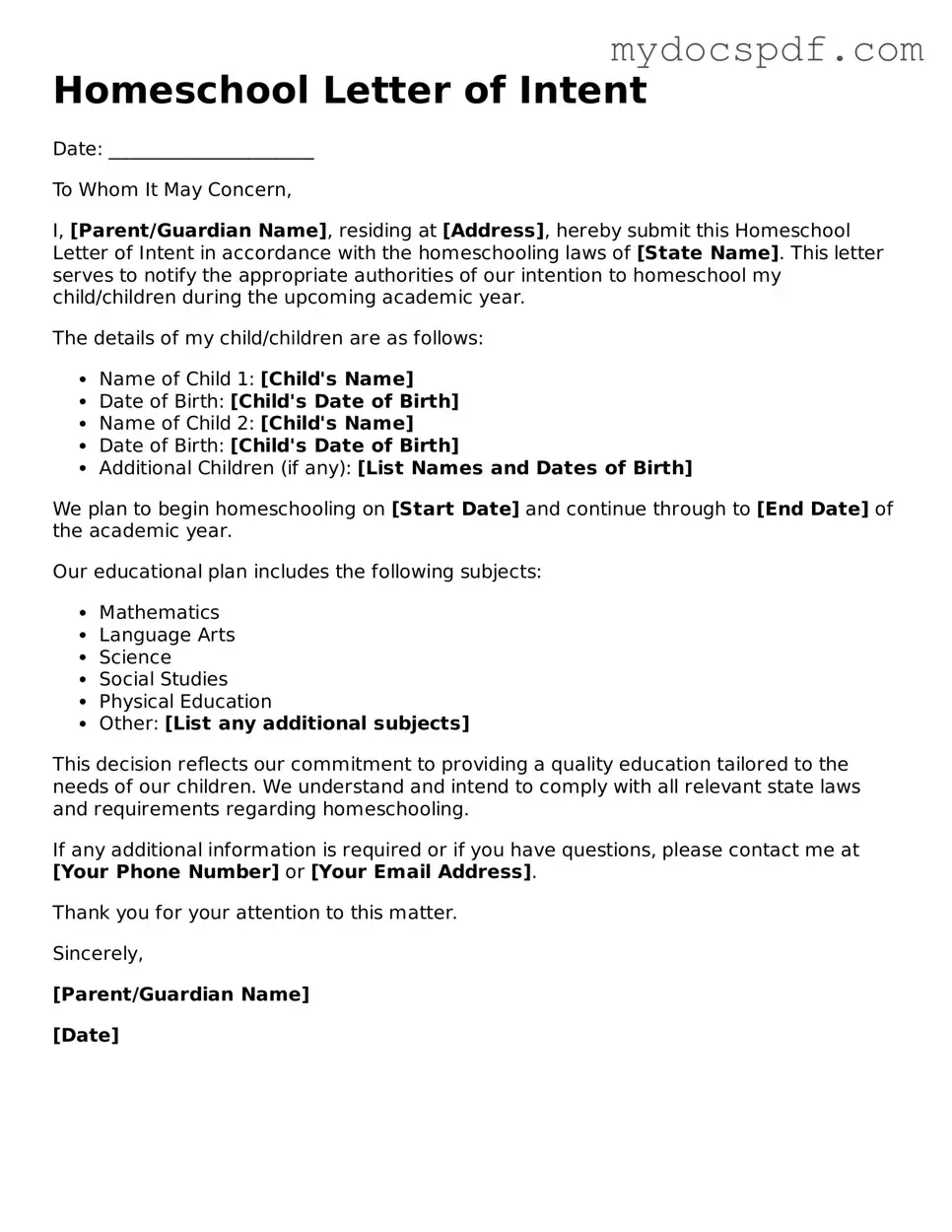Homeschool Letter of Intent
Date: ______________________
To Whom It May Concern,
I, [Parent/Guardian Name], residing at [Address], hereby submit this Homeschool Letter of Intent in accordance with the homeschooling laws of [State Name]. This letter serves to notify the appropriate authorities of our intention to homeschool my child/children during the upcoming academic year.
The details of my child/children are as follows:
- Name of Child 1: [Child's Name]
- Date of Birth: [Child's Date of Birth]
- Name of Child 2: [Child's Name]
- Date of Birth: [Child's Date of Birth]
- Additional Children (if any): [List Names and Dates of Birth]
We plan to begin homeschooling on [Start Date] and continue through to [End Date] of the academic year.
Our educational plan includes the following subjects:
- Mathematics
- Language Arts
- Science
- Social Studies
- Physical Education
- Other: [List any additional subjects]
This decision reflects our commitment to providing a quality education tailored to the needs of our children. We understand and intend to comply with all relevant state laws and requirements regarding homeschooling.
If any additional information is required or if you have questions, please contact me at [Your Phone Number] or [Your Email Address].
Thank you for your attention to this matter.
Sincerely,
[Parent/Guardian Name]
[Date]
